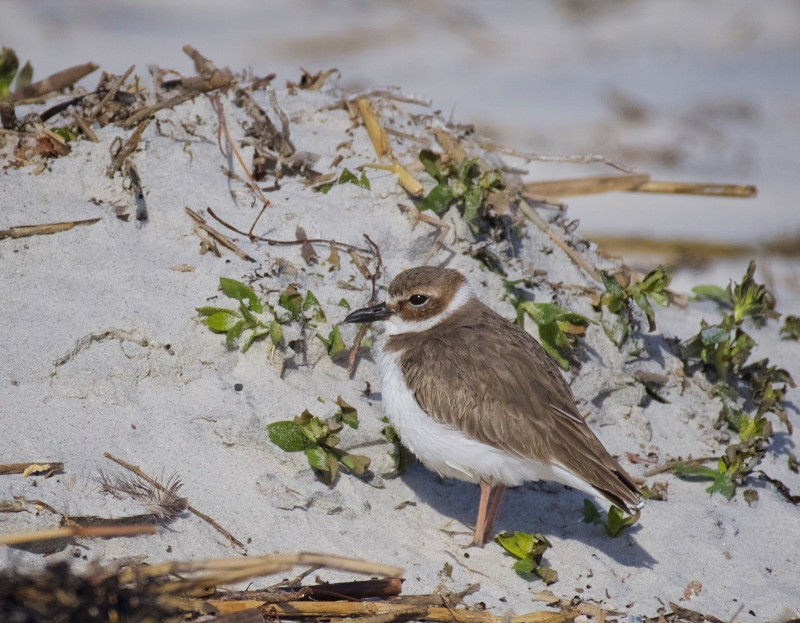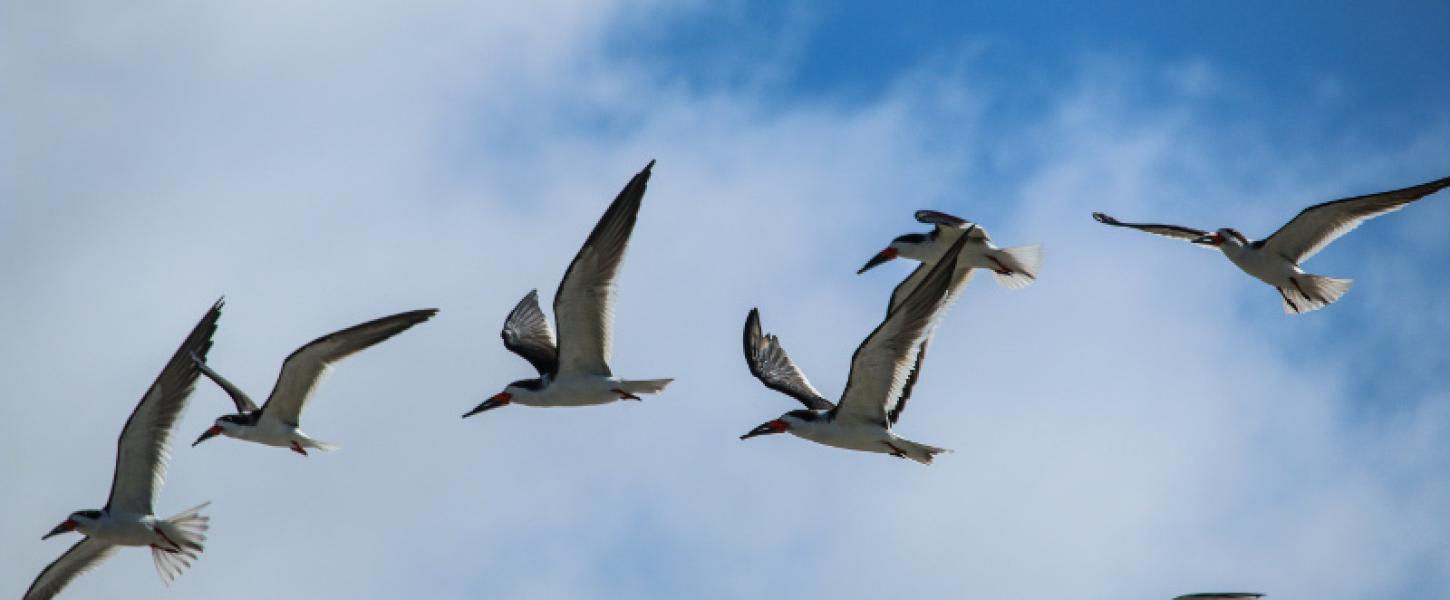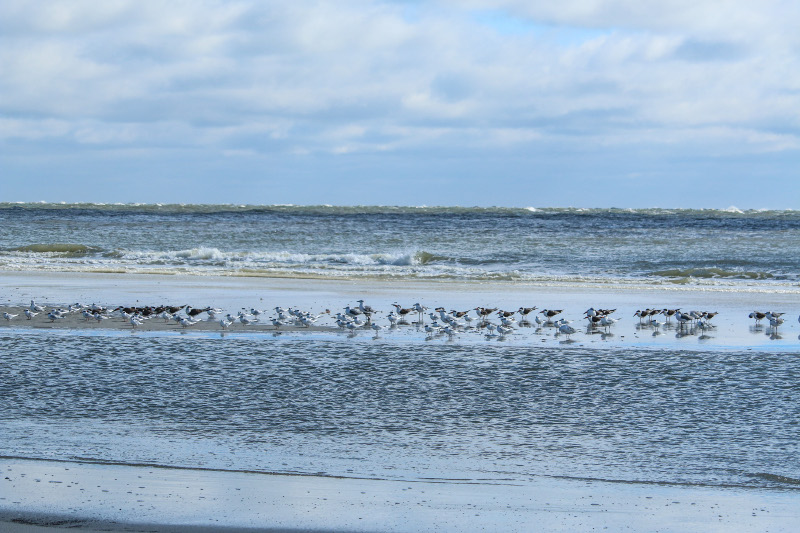
Birds of Amelia Island

While the north end of Amelia Island hosts an impressive Civil War era brick and mortar fort at Fort Clinch State Park, the south end of the island forms a natural haven for wildlife and shorebird nesting. This beach oasis has long been recognized for its importance to regional species, especially those of the feathered variety.
Originally designated as a Critical Wildlife Area in 1982 by the Florida Fish and Wildlife Conservation Commission, the park's nearly four-decade legacy of preservation provides extra protection for critically imperiled species like the least tern, American oystercatcher, black skimmer and Wilson’s plover.

Arriving each spring, shorebirds begin courtship rituals and pairing up in anticipation of nesting season. The males scour the dunes and shelly beach flats for the ideal spot to build their nest scrapes. Painstakingly, he carves out a few shallow, bowl-shaped depressions in the impenetrable sand and skillfully decorates the edges with seashells, driftwood and beach treasures to ensure optimum camouflage for his eggs.
Females size up their mate’s handiwork and pick their favorite to lay two to four ping-pong ball sized (or smaller) speckled eggs. The pair alternates incubating, keeping the eggs warm at night, and shading, or keeping the eggs cool during the heat of the day, while defending the tender eggs from beach predators like marauding ghost crabs, ravenous fish crows and gulls, and wily coyotes.
After approximately three weeks, the eggs hatch and the baby creatures emerge to wobble after their parents on new legs. Often called cotton-balls on Q-tips, the precocial chicks chase after mom and dad, learning what to eat and how to hide to escape danger.
Three to four weeks of life training and growing flight feathers prepares the chicks for taking to the skies.

The precarious dance of shorebird nesting necessitates that extra protective measures are in effect on the beaches from March through September. Certain areas will post closures to keep unknowing visitors from accidentally disturbing or crushing vulnerable eggs and chicks.
A long stretch of Atlantic shoreline including the southern point of the island is temporarily closed to vehicles and equestrians. Anglers and pedestrians at the waterline are permitted to pass through if they keep their feet wet and avoid disturbing resting birds. Law enforcement officers spend extra time patrolling during this sensitive time to enhance protections and inform beach-goers of shorebird etiquette.
Volunteers and shorebird stewards are stationed at the nesting areas during busy weekends to provide outreach and a close-up view of the adorable chicks through spotting scopes or binoculars.

So how can you visit and also support these species? After all, can you imagine a trip to the beach without hearing the call of a gull or seeing a pelican soar overhead? Visit the park during nesting season to have a chance at seeing the most birds, and bring your binoculars. Heed the posted closures and enjoy the wildlife from afar. Don’t flush resting shorebirds as they travel great distances to get here and feed. Leave your four-legged friend at home. Just the smell, and especially the sight, of dogs or cats can chase shorebirds away from these areas.
Litter is a threat to wildlife and can lead to entanglement and accidental ingestion, which can be deadly. Make sure to pack out what you pack in.
Share the importance of shorebirds with family and friends and encourage them to become beach advocates too. With human development ever encroaching on Florida’s coastlines, keeping these wild areas safeguarded for native species is ever more important to ensuring future generations of both shorebirds and people can exist together.